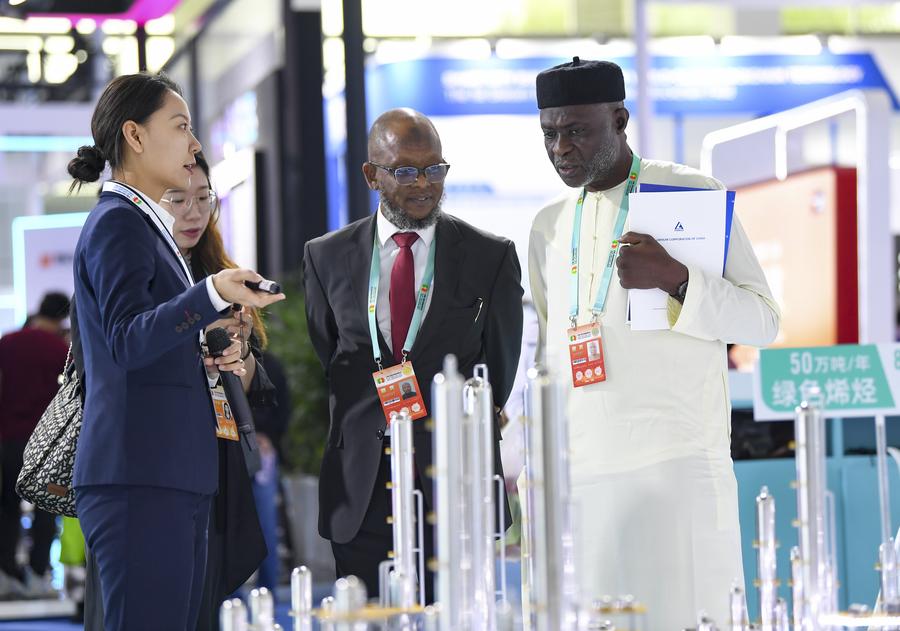The Road to Development

In this era of opportunities and risks, enhancing communication and collaboration with BRI partners is essential to guide technology toward positive outcomes and advance human rights through technological cooperation.
In September and October 2013, Chinese President Xi Jinping proposed the Silk Road Economic Belt and the 21st-Century Maritime Silk Road. Together, they make up the Belt and Road Initiative (BRI), which aims to boost connectivity along and beyond the ancient Silk Road routes. Over the decade that followed, China signed over 230 cooperation agreements related to the BRI with more than 150 countries and 30 international organizations.
Through the BRI, China has promoted peace and development, as well as economic and technological cooperation with partner countries, fostering a community with shared interests and responsibilities. This community is characterized by political trust, economic integration and cultural inclusivity. The common goals of China and its BRI partners include improving the quality of life for their populations and achieving societal harmony. In doing so, they aim to advance human rights in these countries.
Tech for good
The Western perspective on human rights often emphasizes political rights, protecting people from severe political, legal and social abuses. China, the world’s largest developing country, considers the rights to subsistence and development the core of human rights.
In many developing countries, especially the least developed ones, people face different conditions compared to their peers in industrialized Western economies. Alongside guaranteeing political rights, it is equally crucial to ensure access to adequate food, decent housing, basic healthcare and compulsory education. This is a fundamental pursuit of the BRI.
Many developing countries still grapple with challenges in, for instance, food security. In the 10 years since the inception of the BRI, technological advancements and subsequently increased food production have improved the basic living standards for many in the participating countries.
In recent years, China has expanded agricultural cooperation with BRI partners. Join Hope Seeds, a major producer of corn, wheat and cotton seeds headquartered in northwest China’s Xinjiang Uygur Autonomous Region, introduced the corn variety Jiushenghe 2468 to Kazakhstan in 2015.
Partnering with the Kazakh Research Institute of Agriculture and Plant Growing, they developed seeds suited to local soil and climate, achieving yields of over 12 tons per hectare compared to the local average of 4.5 tons.

Water scarcity is a major obstacle for agriculture in Central Asian countries like Uzbekistan. Since 2016, China’s Northwest Agriculture and Forestry University has collaborated with Uzbek partners to build a smart irrigation system under the BRI. This has led to a 30-percent increase in local agricultural production, a 50-percent reduction in water usage and a 40-percent cost reduction.
China’s advanced medical technology helps improve the health of people in BRI partner countries. The development and widespread use of high-speed 5G networks have made telemedicine a reality, extending medical resources to remote and economically underdeveloped areas.
This allows local patients to receive timely medical services and increases healthcare coverage—all the while reducing financial burdens. By analyzing large volumes of patient data, China’s medical AI models can accurately diagnose and treat diseases. This helps people better understand disease mechanisms and transmission patterns.
Going green
The BRI is a path to economic prosperity and also one to green development. Enhancing the quality of the ecological environment and fostering the harmonious coexistence between humans and nature are central to safeguarding people’s environmental rights. These goals are integral to the collaboration between China and BRI partner countries.
Technological advancement should not push human society toward severe pollution but rather ensure that humanity can live in an environment with clear waters and green mountains.
Over the past decade, China has promoted the establishment of green, low-carbon development cooperation mechanisms under the BRI. The country signed a memorandum of understanding with the United Nations Environment Programme to build a green Belt and Road from 2017 to 2022, and signed more than 50 cooperation documents on ecological and environmental protection with BRI partner countries and international organizations.
Energy has been a key area of cooperation between China and Saudi Arabia. In recent years, the focus of China-Saudi cooperation has gradually shifted toward renewable energy, new energy technologies and energy efficiency improvements. Saudi Arabia, with its abundant solar energy resources, has seen investments from China in the Red Sea New City Project, establishing solar photovoltaic panels in the desert. The two countries will explore cooperation opportunities in wind and hydrogen-generated energy, jointly promoting the global transition to a green-energy structure.

Another notable project is the Garissa Solar Power Plant in Kenya, one of the largest grid-connected solar power plants in East and Central Africa. The plant, which covers an area of 34.4 hectares, was built by China’s Jiangxi Corporation for International Economic and Technical Cooperation.
Today, the plant generates half of the country’s solar power, which contributes 2 percent of the national energy mix. This has led to a reduction in energy costs and has promoted the development of clean, reliable and sustainable electricity.
China’s remote sensing technology can help BRI partners quickly obtain information on forest coverage changes, water pollution and the distribution of air pollutants, as the applications of satellite remote sensing technology have broadened.
China and Indonesia have established a cooperation mechanism for marine environmental protection, using satellite remote sensing technology to monitor coral reef ecosystems and their restoration. This not only protects biodiversity but also provides sustainable fishery resources and eco-tourism income sources for coastal communities.
Risks and challenges
Digital technology is rapidly advancing. The protection of human rights has also evolved, including that of digital human rights—the right to privacy, freedom and more in the digital environment. Digital technology must be people-oriented, with the protection of individual rights and dignity as its ultimate goal.
With its leading cybersecurity technologies, including encryption and privacy protection algorithms, China helps BRI partners secure personal information during transmission and storage, preventing unauthorized access and leaks. Blockchain technology further protects individual privacy through decentralized data storage and transmission.
To address the growing threat of cyberattacks and cybercrime, China is strengthening cybersecurity cooperation with BRI partners, ensuring cybersecurity and stability. Collaborative efforts with countries such as Myanmar, Thailand and Cambodia focus on combating telecom fraud, bringing criminals to justice, and rescuing trafficked and deceived persons.
Using the platform of the BRI, China aims to foster a peaceful, open, secure, stable, interconnected and accessible information and communication technology environment, mitigating human rights violations in cyberspace.
Human rights should remain the core value in technological innovation and development. In this era of opportunities and risks, enhancing communication and collaboration with BRI partners is essential to guide technology toward positive outcomes and advance human rights through technological cooperation.
Xiao Junyong is executive director of the Center for Science, Technology and Human Rights at the Beijing Institute of Technology; Feng Zhongbin is a research assistant with the center.
 Facebook
Facebook
 Twitter
Twitter
 Linkedin
Linkedin
 Google +
Google +










